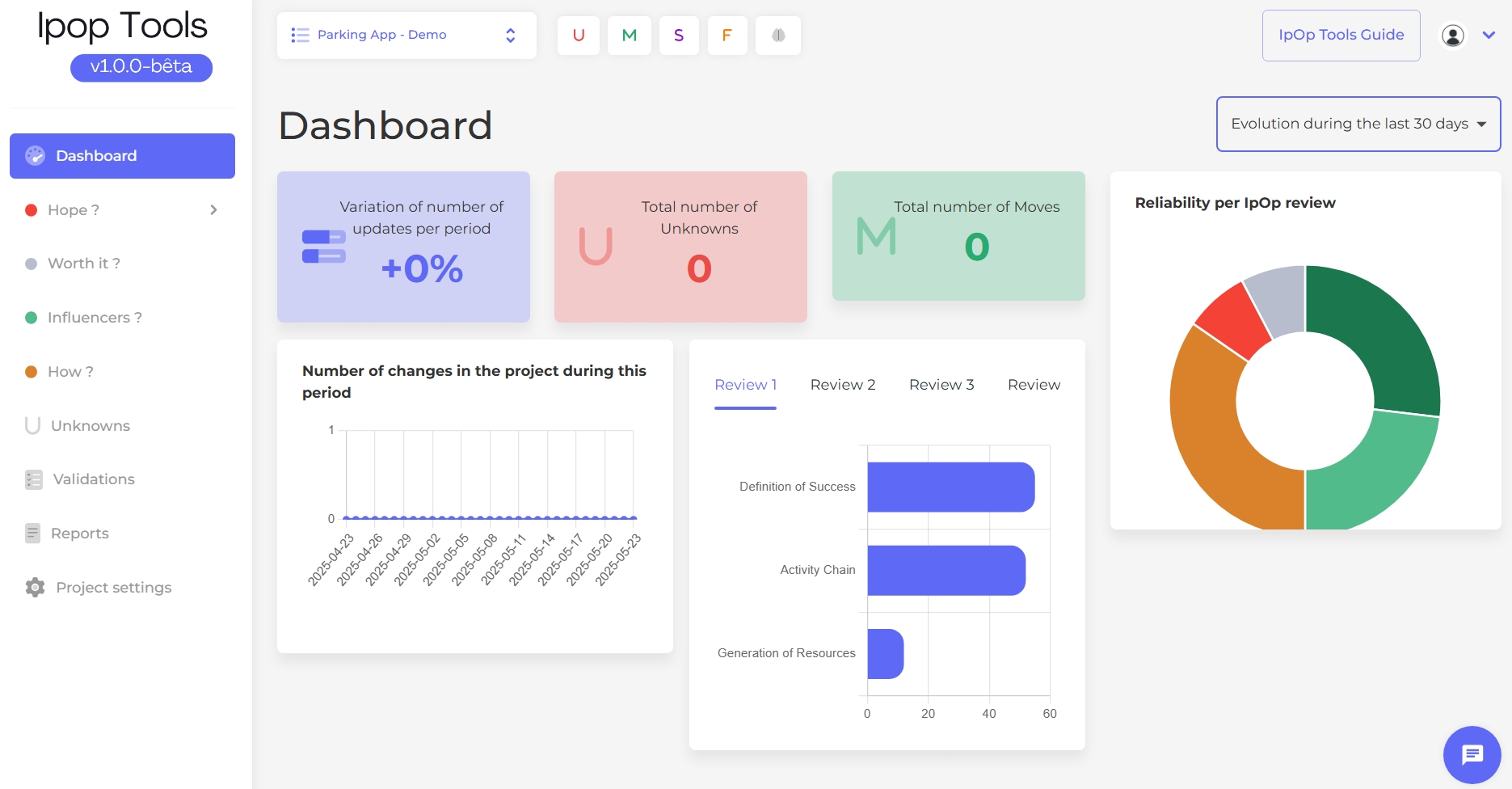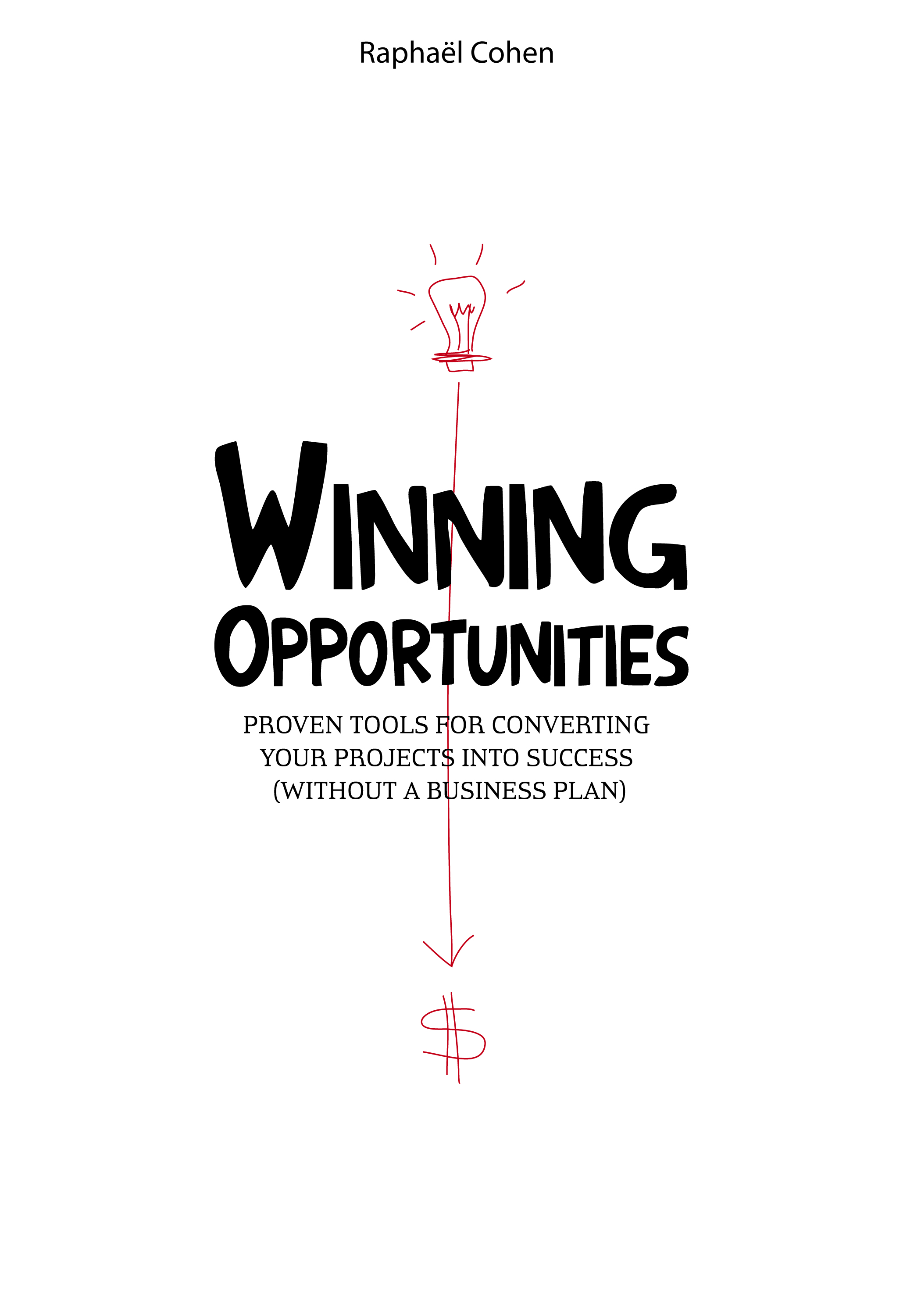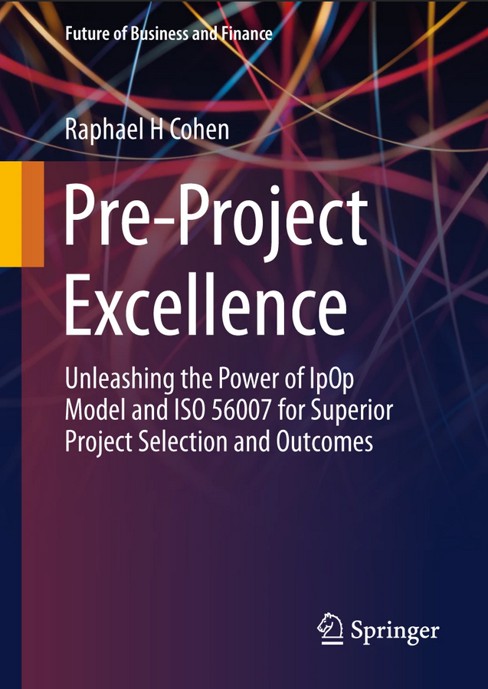About the New Book
The original book, “Winning Opportunities, proven tools for converting your projects into success (without a business plan)”, is no longer available for free download. However, we are excited to announce the release of its comprehensive successor, also by Raphael H Cohen:
Pre-project Excellence: Unleashing the Power of IpOp Model and ISO 56007 for Superior Project Outcomes and Selection (published by Springer).
Pre-project Excellence: Unleashing the Power of IpOp Model and ISO 56007 for Superior Project Outcomes and Selection (published by Springer).
Why Upgrade? Key Benefits of the New Edition
- Learn the intricacies of the IpOp Model and the ISO 56007 standard.
- Discover proven strategies for selecting high-value projects.
- Acquire techniques to ensure superior project outcomes.
- Gain valuable insights through real-world examples and case studies.
Explore the IpOp Model and ISO 56007
The IpOp Model is a proven framework for project selection and pre-project analysis, now enhanced with the latest ISO 56007 guidelines. Whether you are a project manager, innovator, or decision-maker, this book will help you make data-driven decisions and achieve project success.
Enhance Your Projects with IpOp Tools Software

For those seeking a practical application of the IpOp Model, we recommend IpOp Tools. This user-friendly software streamlines project selection and management:
- Effortlessly assess the holistic viability of your project ideas.
- Define a realistic roadmap outlining all the challenges ahead of you.
- Realistically identify the time and resources you will need.
- Automatically obtain a convincing Business Case that addresses all decision-makers' concerns.
- Select only worthwhile and feasible project.
- Improve collaboration and decision-making within your team.
Start Your Journey to Project Success
Thank you for being part of the Winning Opportunities community. We invite you to explore the new book and IpOp Tools to continue your journey toward superior project outcomes.

